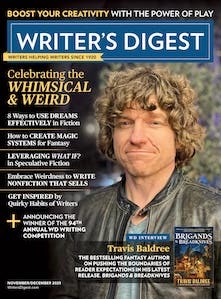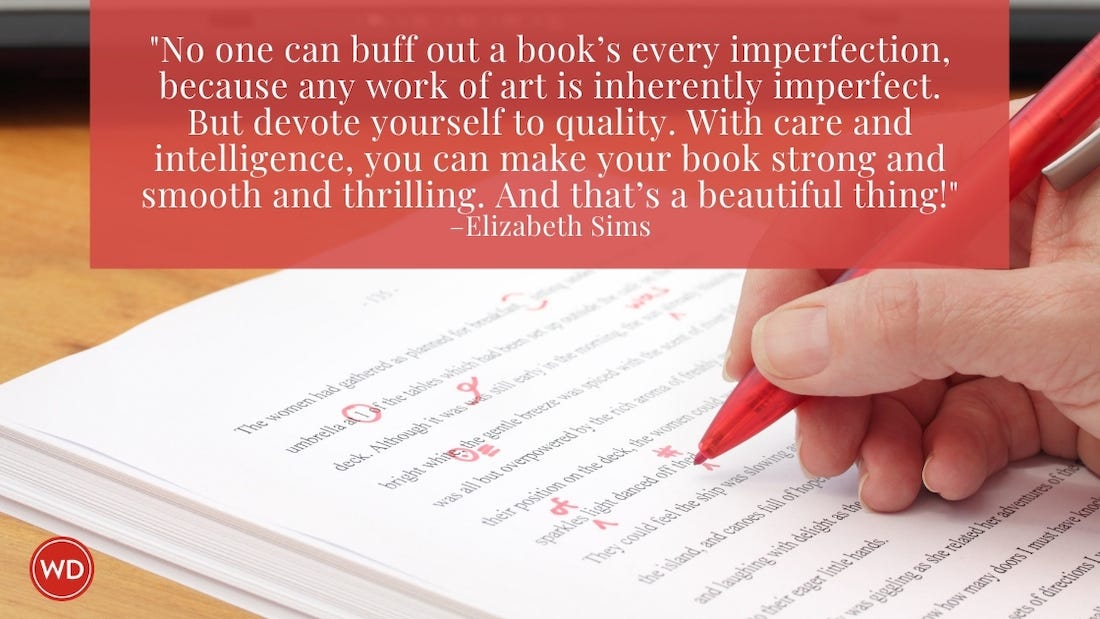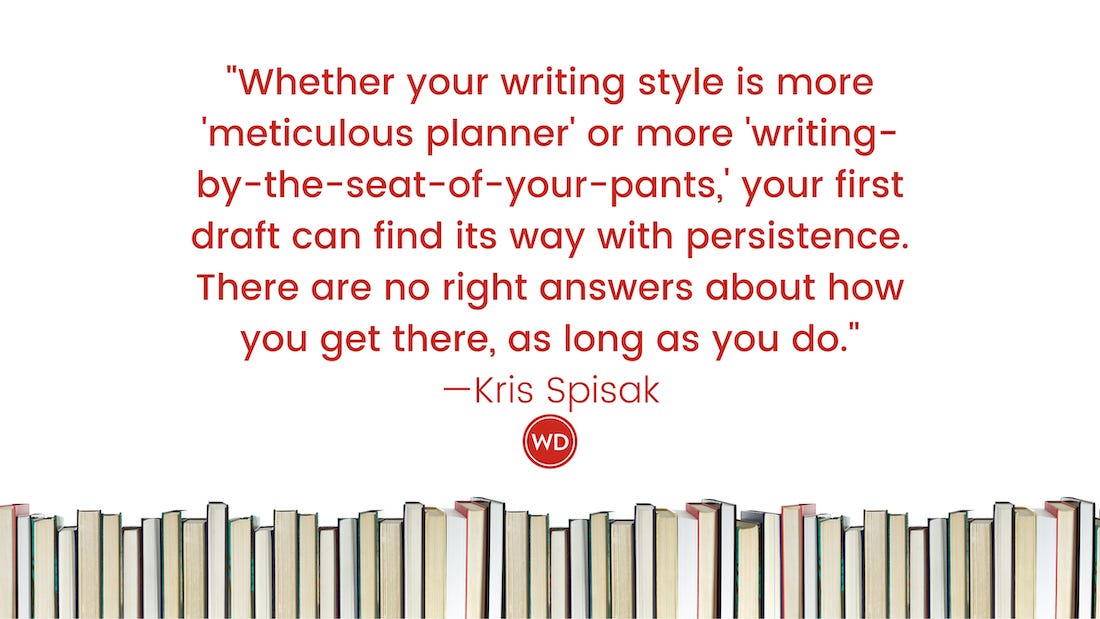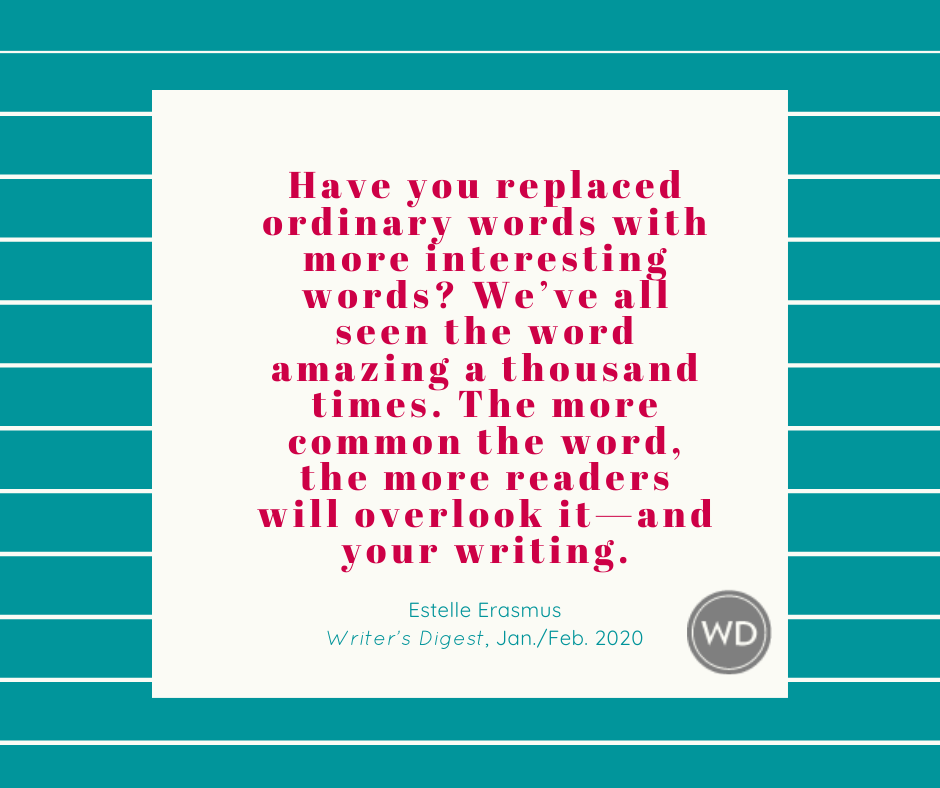5 Story Mistakes Even Good Writers Make
Sometimes it’s too easy to get caught up in the so-called rules of writing and forget what’s really important. Here’s how to avoid the traps that can steer your story off-course.
In fiction, story matters more than anything else.
Yet too often authors forget this and, in their zeal to impress readers or wow editors, pepper their writing with distracting devices that only end up undermining the story itself.
Never let anything get between your story and your readers. Here are five of the most common ways even the best writers veer off-course—and simple strategies for avoiding them.
1. Overdoing Symbolism/Themes
A few years ago I picked up a literary novel that everyone was talking about. In the first chapter there was a storm; in the second, someone was washing his hands; then a character was crying; then there was a baptism. I remember thinking, OK, I get it. Your image is water and your theme is cleansing—now get on with the story.
Problem was, from that point on, guess what I was doing?
Yup … looking for the next way the writer was going to weave a water image into her story. And she delivered, scene after predictable scene.
As a reader I was no longer emotionally present in the story. I’d become a critic, an observer. And that’s definitely not what a storyteller wants her readers to do.
The more your readers are on the lookout for your images, your themes, your symbolism, and so on, the less they’ll be impacted by the real essence of your story.
Does that mean that themes and images don’t have a place in your work? Not at all. But it does mean that rather than building your story around that theme (love, forgiveness, freedom, etc.), or advice (“Follow your dreams,” “Be true to your heart,” etc.), or a cliché (“Every cloud has a silver lining,” “Time heals all wounds,” etc.), it’s better to drive your narrative forward through tension and moral dilemmas.
So, instead of using the theme “justice,” let the events of the story pose a more engaging question: “What’s more important, telling the truth or protecting the innocent?”
Rather than giving the advice, “You should forgive others,” let your story explore a dilemma: “How do you forgive someone who has done the unthinkable to someone you love?”
Let your story do more than reiterate the cliché, “The needs of the many outweigh the needs of the few.” Instead, challenge that axiom by presenting your characters with situations that raise the question, “When do the needs of the few outweigh the needs of the many?”
Respect your readers. Assume that they’re as smart as you are. If you can easily identify your own imagery, symbolism, themes and so on, expect that they will, too. And as soon as they do, they’ll be distracted from the story itself.
2. Trying Too Hard
There’s nothing less impressive than someone trying to be impressive. There’s nothing less funny than someone trying to be funny. Eloquence doesn’t impress anyone except for the person trying so hard to be eloquent.
So look for places in your story where you were trying to be funny, clever or impressive, and change those sections or remove them.
Some writers shoot for humor by writing things like, “she joked,” “he quipped,” “he mentioned in his usual fun-loving way,” and so on. Don’t fall into this trap. If your dialogue is really funny, you don’t need to point that out to your readers. (And if it’s not as funny as you’d intended, you don’t need to draw attention to the fact.)
Some authors resort to using a profusion of speaker attributions. Their characters chortle, grunt, exclaim, reiterate, gasp, howl, hiss and bark. Whenever I read a book like this I find myself skimming through the dialogue just to see what the next synonym for said will be. Readers get it. They know you own a thesaurus. Just tell the story.
In the same way, drop antiquated or obscure words unless they’re necessary for character development or maintaining voice. This isn’t to say that you can’t write intelligent, incisive, challenging prose, but any time the meaning of an unfamiliar word isn’t immediately obvious within the context of the story, choose another word that won’t trip readers up. This is especially true as you build toward the climax, since the pace of the story needs to steadily increase.
Similarly, avoid the temptation to impress your readers with your research, your plot structure or your knowledge of the flora and fauna of western North Carolina. When readers pick up your book, they’re not preparing for a spelling bee or a doctoral dissertation or a medical exam; they’re hoping for an entertaining, believable story that will transport them to another world and move them on a deep, emotional level.
Textbook literary devices fall under this same umbrella—they’re too contrived. Writing something like, “She cautiously closed the closet door and crept across the carpet,” might have impressed your English professors, but it does nothing to serve readers in today’s marketable fiction. As soon as readers notice the alliteration, they’ll be distracted—and whether they’re counting up the number of times you used the letter C, or rolling their eyes at your attempt to be clever, they’ve momentarily disengaged from your story. And that’s the last thing you want them to do.
Believe it or not, you don’t want readers to admire your writing: You want them to be so engaged in the story itself that they don’t notice the way you use words to shape it. Anything that jars readers loose from the grip of the story needs to go, even if it seems “literary.” Weed out figures of speech that don’t serve the mood of the scene. For example, if you’re curled up with a book and are deep in the midst of a chapter depicting an airplane hijacking, you wouldn’t want to read, “The clouds outside the window were castles in the sky.” Not only does the superfluous description undermine the suspense, but castles carry a positive connotation that further disrupts the tension. If you can’t resist the urge to use a figure of speech when writing a scene like this, choose one that accentuates the mood: “The jet plummeted through the dungeon of clouds.”
Over the years I’ve heard of authors who’ve written books without punctuation, or without the word said, or without quotation marks, or by using an exact predetermined number of words. To each his own. But when these artificial constraints become more important to the author than the reader’s experience with the story is, they handcuff it.
Whenever you break the rules or keep them, it must be for the benefit of your readers. If your writing style or techniques get in the way of the story by causing readers to question what’s happening, analyze the writing, or page back to earlier sections in order to understand the context, you’ve failed.
You want your writing to be an invisible curtain between your readers and your story. Anytime you draw attention to the narrative tools at your disposal, you insert yourself into the story and cause readers to notice the curtain. Although it may seem counterintuitive, most authors looking to improve their craft need to cut back on the devices they use (whether that’s assonance, onomatopoeia, hyperbole, similes or whatever), rather than add more.
3. Failing to Anticipate the Readers’ Response
A plot flaw is, simply put, a glitch in believability or causality. When a character acts in a way that doesn’t make sense, or when one scene doesn’t naturally follow from the one that precedes it, readers will stumble.
Imagine your protagonist hears that a killer is in the neighborhood and then, in the next scene, decides to spend a cozy evening in the kitchen making homemade pasta. Readers will think, What? Why doesn’t she lock all the doors and windows, or call the police, or run to her car and get out of the area? Thus, at the very moment where you want them to be drawn deeper into the narrative, your readers pull away and start to question your character’s actions—and, to some degree, your storytelling ability.
As soon as an event isn’t believable, it becomes a distraction. So ask yourself at every plot point: “Is there enough stimulus to motivate this action?” And then make sure there is. Always anticipate your readers’ response.
Try to step back and read your work-in-progress as objectively as you can, through the eyes of a reader who has never seen it before. If you come to a place where you think, Why doesn’t she just … ? or, Wait, that doesn’t make sense … that’s where you have some revising to do. And the solution doesn’t have to be complicated. Often you can solve a plot flaw in your story simply by having your characters point it out. If your protagonist says something like, “I couldn’t believe she would do such a thing—it just didn’t compute,” readers will think, Yes, exactly—I thought the same thing! There’s more going on here than meets the eye. The more you admit that the scene has a believability problem, the less readers will hold you responsible for it.
With this in mind, you should also make sure every special skill or gadget needed in the climax is foreshadowed earlier in the story. Coincidences drive a wedge in believability. Foreshadowing removes them. So if the diver suddenly needs a harpoon to fight off the killer barracuda and he reaches down and—how convenient!—just happens to find one, readers won’t buy it. Show us the harpoon earlier so it makes sense when it reappears at the climactic battle.
4. Using a Hook as a Gimmick
Many well-meaning writing instructors will tell you that you need to start your story with a good “hook” to snag your readers’ attention. And they’re right—to a certain degree.
While I was teaching at one writing conference a woman gave me her story for a critique. It started with an exciting car chase. I said, “Great, so this is an action story.”
“No,” she told me. “It’s a romance. The woman goes to the hospital and falls in love with the doctor.”
“But it starts with a car chase and explosion. Readers will expect it to escalate from there.”
“I had a different opening,” she admitted, “but my critique group told me I needed a good hook.”
It may have been true that her story needed a better hook, but she landed on the wrong one. Hooks become gimmicks if they don’t provide the platform for escalation.
Too many times a writer will grab readers’ attention early on with a scene that’s clearly been contrived just for that purpose, without introducing the characters or the setting of the story. Consequently the writer is forced to insert excessive backstory into the next scene—thus undermining the forward momentum of the plot. Take your time, trust your readers and craft a hook that orients them to the world you’ve created. Then drive the story forward without having to explain why you started it the way you did.
5. Leaving Readers Hanging
Never annoy your readers.
Sometimes I read books in which the author withholds key information from readers, presumably in an effort to create suspense. But failing to give readers what they want doesn’t create suspense, it causes dissatisfaction.
For example, don’t leave a point-of-view character in the middle of an action sequence. If, in the final sentence of a chase scene, you write that your protagonist “careened around the bend and crashed into the cement pylon jutting up from the side of the road,” readers will turn to the next chapter wanting to find out if she is
conscious, dead, etc.
But if that next chapter instead begins with another point-of-view character, one in a less stressful situation, readers will be impatient. They don’t want to wait to come back to the woman in the car (or maybe she’s in the hospital by then) a chapter later.
If readers are tempted to skip over part of your story to get to a part they want to read, you need to fix that section. As you write, constantly ask yourself what the readers want at this moment of the story.
Then, give it to them—or surprise them with something even better.
Steven James is the critically acclaimed author of thirteen novels. He serves as a contributing editor to Writer’s Digest magazine, hosts the biweekly podcast The Story Blender, and has a master’s degree in storytelling. Publishers Weekly calls him “[a] master storyteller at the peak of his game.” Steven’s groundbreaking book Story Trumps Structure: How to Write Unforgettable Fiction by Breaking the Rules won a Storytelling World award as one of the best resources for storytellers in 2015. When he’s not working on his next novel, Steven teaches Novel Writing Intensive retreats across the country with New York Times Bestselling author Robert Dugoni.









